Hunza
LOCATION
Hunza is situated at distance of 100km form
Gilgit. It can be
reached through KKH which runs through some of the most magnificent mountain ranges of the
world. All the way from Gilgit to central Hunza you will be able to see snow capped peaks
with glaciers that virtually stretch down to the road.
REGION
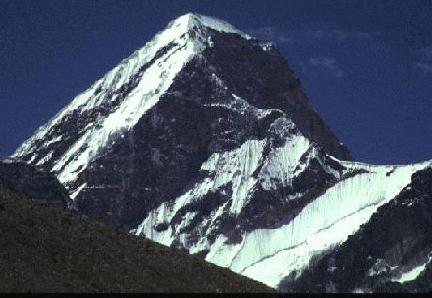 The Karakoram Highway (KKH) connects the Silk Route oasis
of
Kashgar
with Rawalpindi and Islamabad via the 4730 meter Khunjerab Pass, the semi-mythical Hunza
Valley and the
The Karakoram Highway (KKH) connects the Silk Route oasis
of
Kashgar
with Rawalpindi and Islamabad via the 4730 meter Khunjerab Pass, the semi-mythical Hunza
Valley and the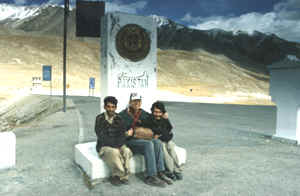 trading post to Gilgit. Despite half a dozen languages the region crossed
by the highway has an identity of its own, defined by religion, commerce and a demanding
environment with in the reach of the KKH is some of the most mind-bending mountain scenery
anywhere and, in the Karakoram, the highest concentration of lofty peaks
and longest
glaciers in the world, some virtually at the edge of the road. The Xingian province of
China connects with Pakistan at Khunjerab at a height of 15000ft above sea
level. The KKH
runs all the way from Northern Pakistan up to China'.
trading post to Gilgit. Despite half a dozen languages the region crossed
by the highway has an identity of its own, defined by religion, commerce and a demanding
environment with in the reach of the KKH is some of the most mind-bending mountain scenery
anywhere and, in the Karakoram, the highest concentration of lofty peaks
and longest
glaciers in the world, some virtually at the edge of the road. The Xingian province of
China connects with Pakistan at Khunjerab at a height of 15000ft above sea
level. The KKH
runs all the way from Northern Pakistan up to China'.
HISTORY
The region is dense with history and artifacts, from Alexander's campaign to
the 20th century's rivalry between British and the Russian empires. It was through this
region that Buddhism reached China. Baltit has always been the capital of Hunza. It
consists almost entirely of Baltit fort and a compact village.
Karimabad is just a
modern extension of Baltit, with fine
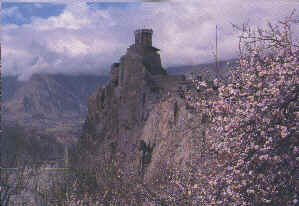 hotels cafes and a bazaar. The historic Baltit fort,
built some 800 years ago on the moraines of Ulter glacier, towers over the town of
Karimabad and faces the Rakaposhi peak, and is a wonderful tourist spot. Hunza falls under
the cold desert mountainous ecosystems where the average rainfall rarely exceeds 200mm.
The valley receives most of its precipitation in the form of snow. The winter is
very cold
and frost while the summer is leisurely cool. The people of Hunza known as
"Hunzukutz", are well known for their hospitality and friendliness. The
people are also known for their long-livity.
hotels cafes and a bazaar. The historic Baltit fort,
built some 800 years ago on the moraines of Ulter glacier, towers over the town of
Karimabad and faces the Rakaposhi peak, and is a wonderful tourist spot. Hunza falls under
the cold desert mountainous ecosystems where the average rainfall rarely exceeds 200mm.
The valley receives most of its precipitation in the form of snow. The winter is
very cold
and frost while the summer is leisurely cool. The people of Hunza known as
"Hunzukutz", are well known for their hospitality and friendliness. The
people are also known for their long-livity.
WHAT TO SEE AND WHERE TO GO
Hunza is the heart of beauty of Northern Pakistan. The scenic breath taking views of Mount
Rakaposhi
7788M, with it sloping glaciers is a
must see for every nature loving person. Apart from Rakaposhi, Hunza is also well known
for Ulter peak 77388M,the second
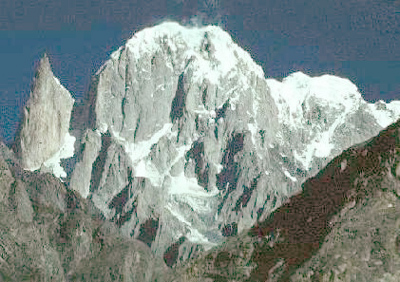 highest peak in Hunza after Rakaposhi with snow all over
it represents the mightiness of this region. Glaciers running down are almost
up to the
edge of the roads. During full bloom in the months of April and May, Hunza is full with
blooming trees giving a real breathtaking scene. Walking through the Hunza valley has a
pleasure of it's own. In the evenings you can walk around Karimabad, the capital of
former Hunza state, shop around take a break or simply enjoy the beauty of Hunza. You will
have access to the most delicious fruits of Hunza, ranging from sugar-sweet apples to
juicy apricots and much more. Dry fruits is a specialty of Hunzukutz. One of the most
special kind and tastiest dry fruits are dried apricots.
highest peak in Hunza after Rakaposhi with snow all over
it represents the mightiness of this region. Glaciers running down are almost
up to the
edge of the roads. During full bloom in the months of April and May, Hunza is full with
blooming trees giving a real breathtaking scene. Walking through the Hunza valley has a
pleasure of it's own. In the evenings you can walk around Karimabad, the capital of
former Hunza state, shop around take a break or simply enjoy the beauty of Hunza. You will
have access to the most delicious fruits of Hunza, ranging from sugar-sweet apples to
juicy apricots and much more. Dry fruits is a specialty of Hunzukutz. One of the most
special kind and tastiest dry fruits are dried apricots.
The
people of Hunza are well known for their hospitality and well behavior. They are very
friendly, kind and helpful. It has been a long tradition of the Hunzukutz to be well
mannered and helpful, even G.lorimer in his book "Language hunting in the
Karakurum"(1920), wrote about the friendly nature of the Hunza people.
You can also enjoy the local food which is almost available in every hotel. The local food
is the secret of the long-lives of the Hunzukutz. People of Hunza can grow old as 100
years plus! and will be still quite healthy.
One can just take a walk to Ulter (with the assistance of a guide) and see the scenic
beauty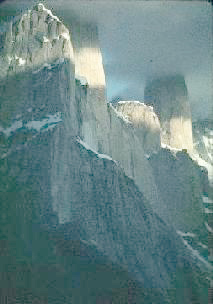 of Ulter peak or walk to Duicker and stay for a night or two at a hotel. At
Duicker
have a chance to view rest of Hunza during sunrise and the picturesque view of Hunza at
sunrise is really breath taking. Duicker is high above Karimabad, right on top of Altit.
Just as Karimabad is the heart if Hunza, Baltit is the heart of Karimabad.
of Ulter peak or walk to Duicker and stay for a night or two at a hotel. At
Duicker
have a chance to view rest of Hunza during sunrise and the picturesque view of Hunza at
sunrise is really breath taking. Duicker is high above Karimabad, right on top of Altit.
Just as Karimabad is the heart if Hunza, Baltit is the heart of Karimabad.
You can visit the 800 years old Baltit fort which has been recently restored. You will
have a guided tour of the Baltit fort by a Baltit fort guide. You will see the ancient way
of living of the rulers of Hunza who ruled Hunza till 1970. The rulers of Hunza were
called "mirs" (singular "Mir"). You will also have the chance of seeing
antiques and handicrafts.
ARTS AND CRAFTS
If you are an antique collector or like handicrafts then Hunza is the right spot for you.
You will be able to see a variety of a antiques and handicrafts. You simply step in an
antique shop and you will find yourself flooded with antiques and handicrafts
Refinement, elegance, workmanship and inventiveness are some words which describes the
arts and crafts of this region. The embroidery tradition of Hunza is well known for its
elegance and master craftsmanship. The embroidery tradition in most of the households was
probably brought from the Central Asian region. For a long period it has remain a popular
pastime for the ladies of the aristocracy.
Cross-stitch, known as "Iraghi chuk" in central and lower Hunza, and "Palm
kok" in upper Hunza, is the most common stitch used on women's caps. Besides this
"Qalmi", "Zarduri" and "Mushkilan" are the also
traditional stitches. A large array of wonderful products carrying traditional
embroidery motifs is
available; wallets, purses, robes and carpets.
TRADITIONAL RUG WEAVING
Sharma or Paloos
Simple techniques are used for weaving traditional rugs from yak and goat hair. It is said
that humming mothers weave their melodious lullabies into these traditional pieces of
craftsmanship. Widely used in all households of Hunza, products from yak hair are supposed
to be a deterrent for ghosts.
"Pattu" is the traditional fabric of Northern Areas. In northern and lower Hunza
the product is known as "Philam" and in upper Hunza "Sargaz".
Most
common products are traditional robes known as "Chogha" or "Beit". It
is said that the julahoo-weaver has learnt this skill by observing a spider weaving
its fine gossamer web.
WOODWORK AND CARVINGS
The artistry of woodwork can be seen in traditional homes as well as in the ancient
Baltit fort. Some of the largest collection of woodwork is displayed in Baltit fort. The
tradition of woodwork came from Central Asian and Baltistan. When a prince of Hunza was
married to a princess of Baltistan around 200 artisans came to Hunza with her and Built
the Altit and Baltit forts.
So, if you are planning to visit Hunza then simply let us know about it we shall be
pleased to assist you in your plans and our experienced staff will handle every request of
yours. Or if you have already planned a visit to Hunza, then just let us know about it we
will be pleased to assist you while you are visiting Hunza and we make sure that you have
the time of your life while you are in Hunza. You will see this part if the world with a
difference via Pamir Tours.